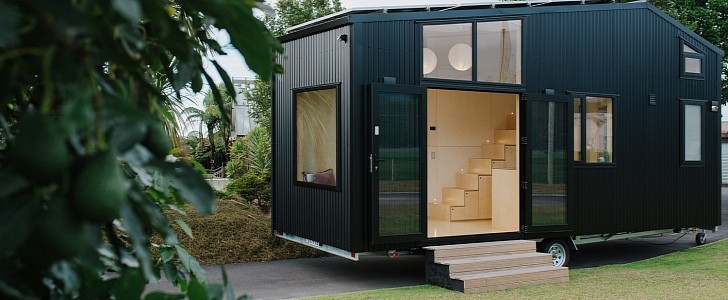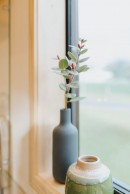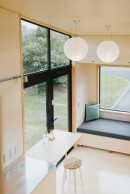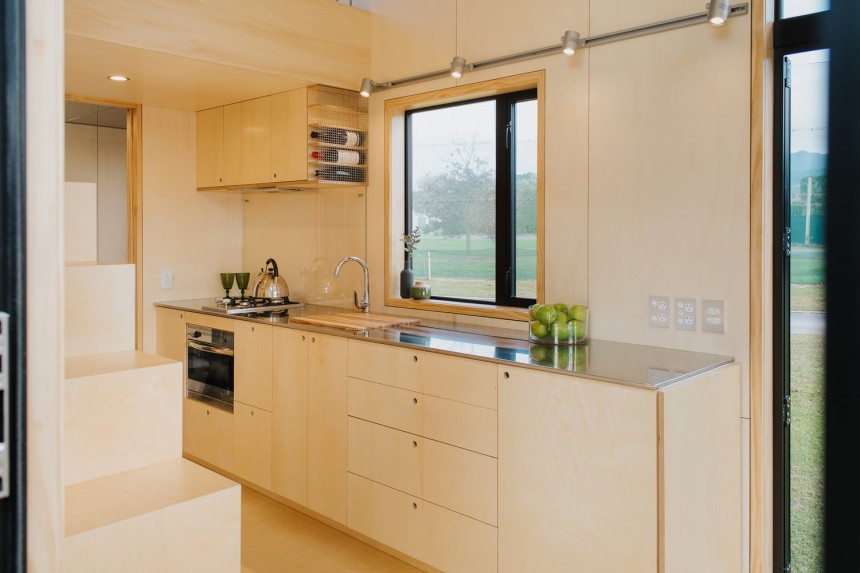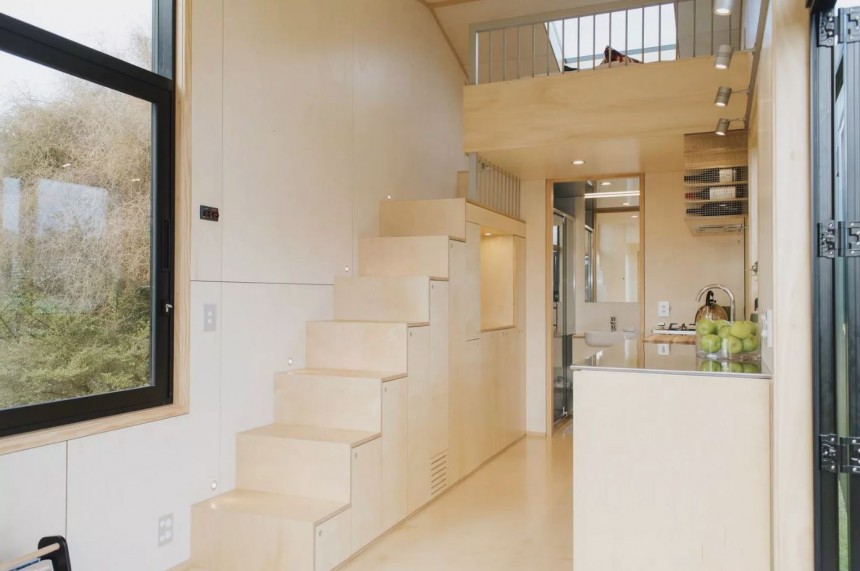Hiking or backpacking doesn’t have to mean leaving all the comforts of home behind. What if you could take the home with you? You could, if you had money to spare, and you would do so knowing the house – a tiny, in this case – had zero impact on the environment.
Tiny homes are usually meant as permanent residences, but Ohariu is perfect for your summer vacation, as well. Think of it as the most glamorous house-shaped tent ever. Delivered in 2019 to a customer in New Zealand and based in Ohariu (hence its name), it stands as prime example that you can have the perfect companion for your daily adventures in the great outdoors. And it’s your own home.
Ohariu is the product of a partnership between two tiny house companies, First Light, which did the design, and Build Tiny, which did the actual construction. Delivered in 2019, it was presented with the 2020 NZIA Wellington Architecture Award – Small Project in the following year and, to this day, remains a relevant tiny in the ever-growing niche of tinies. That’s because it packs all basic amenities in a very small footprint; it is built according to width, height and weight standards in the country so it’s perfectly mobile; and just as importantly, it is net-zero in terms of emissions and waste.
The brief for this project called for “a refined tramping lodge on wheels,” a work of art for a tiny home, and a future base that packed functionality with that outstanding design. The challenge was not small, because the owner also wanted it to be road-legal, so weight had to be kept down to a minimum. It paid off in the end, because Ohariu is a striking build even for this niche, which is packed with gorgeous projects.
Measuring 7.2 m (23.6 feet) in length and weighing a total of 3,498 kg, Ohariu is incredibly tiny. Living space is of just 17 square meters (183 square feet), but it’s made to feel larger through smart design and the warm color theme throughout, creamy poplar plywood and silvery fittings. Accommodation is for two people in the upstairs loft, but there’s a chef’s kitchen, a bathroom with a dry, compost toilet and a glass-walled shower, and even a nook for reading by one of the large picture windows. Storage room is where Ohariu excels: there’s a secret cupboard or closet almost in every available spot, from under the window-side sofa to the cupboards overhead, the stepping stairs, and the walls.
Since this is a tiny meant for hiking, functionality relies in offering the pastimes associated with it: a comfortable place to rest, a kitchen to cook family meals, and the possibility to open it to the outside, to socialize with family and friends. Ohariu comes with several picture windows, and at least those in the front open up like french doors, maximizing interior space to the point where the exterior becomes an extension of the living space.
The tiny sits on a removable trailer, and has a steel frame decked in corrugated iron. It has insulation and offers a heater hidden in the stairs, for colder weather. Though designed with transportability in mind, the owner had it installed by crane, as the video below shows. The point is that, should he wish to just pack up and leave one day, all he’d had to do was hook the trailer to his truck, and get moving.
Another highlight of Ohariu is sustainability. With a six-solar panel array on the roof and a battery and inverter on the back wall, it runs solely on solar power. It also has an LPG gas cylinder, LED lighting, a compost toilet, and low-water usage fittings, which make it very cheap to maintain. It is also almost entirely recyclable and was built using low-maintenance, locally sourced, and durable materials.
So, just how well-off do you have to be to plan your summer adventures around one such movable home? The answer won’t surprise those who have kept an eye on the tiny home market and are well aware that these tinies still come with prohibitive pricing. Ohariu cost $106,000 to build, with everything inside (except for the washing machine, which was not installed at the time of delivery). That’s a lot of money for net-zero glamping for regular folks, but it’s probably affordable for those swimming in cash.
Ohariu is the product of a partnership between two tiny house companies, First Light, which did the design, and Build Tiny, which did the actual construction. Delivered in 2019, it was presented with the 2020 NZIA Wellington Architecture Award – Small Project in the following year and, to this day, remains a relevant tiny in the ever-growing niche of tinies. That’s because it packs all basic amenities in a very small footprint; it is built according to width, height and weight standards in the country so it’s perfectly mobile; and just as importantly, it is net-zero in terms of emissions and waste.
The brief for this project called for “a refined tramping lodge on wheels,” a work of art for a tiny home, and a future base that packed functionality with that outstanding design. The challenge was not small, because the owner also wanted it to be road-legal, so weight had to be kept down to a minimum. It paid off in the end, because Ohariu is a striking build even for this niche, which is packed with gorgeous projects.
Since this is a tiny meant for hiking, functionality relies in offering the pastimes associated with it: a comfortable place to rest, a kitchen to cook family meals, and the possibility to open it to the outside, to socialize with family and friends. Ohariu comes with several picture windows, and at least those in the front open up like french doors, maximizing interior space to the point where the exterior becomes an extension of the living space.
The tiny sits on a removable trailer, and has a steel frame decked in corrugated iron. It has insulation and offers a heater hidden in the stairs, for colder weather. Though designed with transportability in mind, the owner had it installed by crane, as the video below shows. The point is that, should he wish to just pack up and leave one day, all he’d had to do was hook the trailer to his truck, and get moving.
Another highlight of Ohariu is sustainability. With a six-solar panel array on the roof and a battery and inverter on the back wall, it runs solely on solar power. It also has an LPG gas cylinder, LED lighting, a compost toilet, and low-water usage fittings, which make it very cheap to maintain. It is also almost entirely recyclable and was built using low-maintenance, locally sourced, and durable materials.
